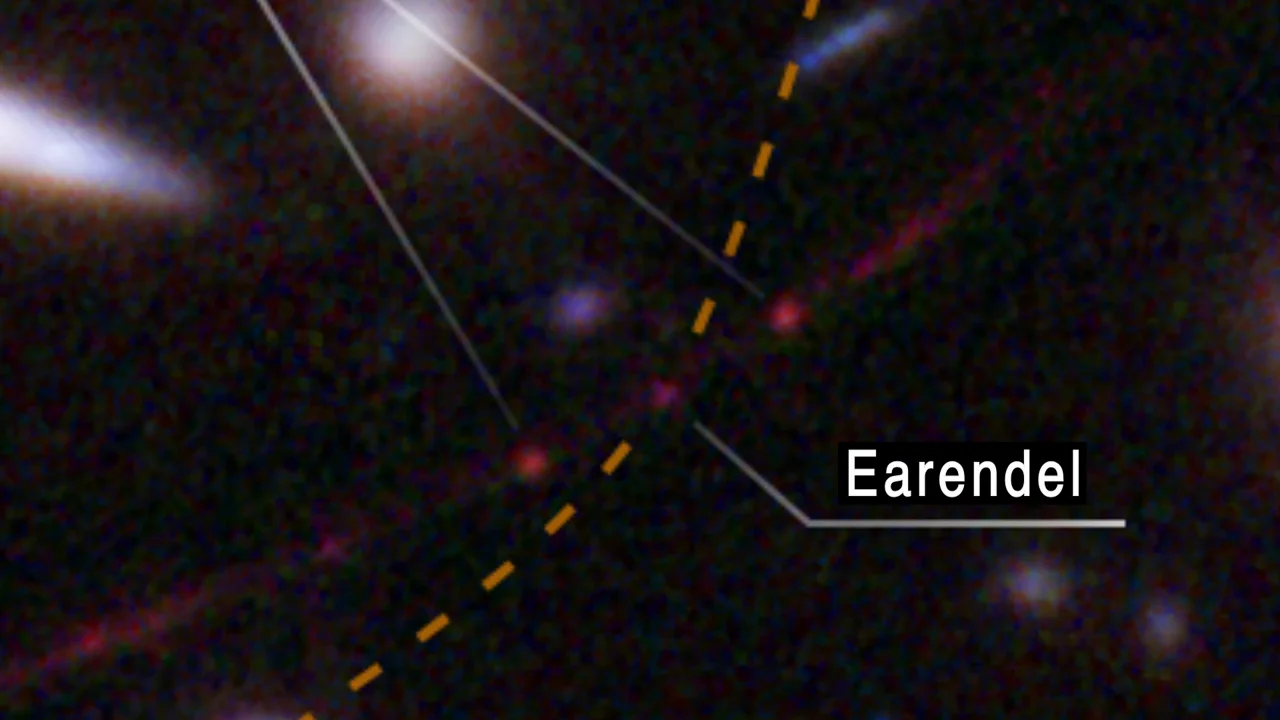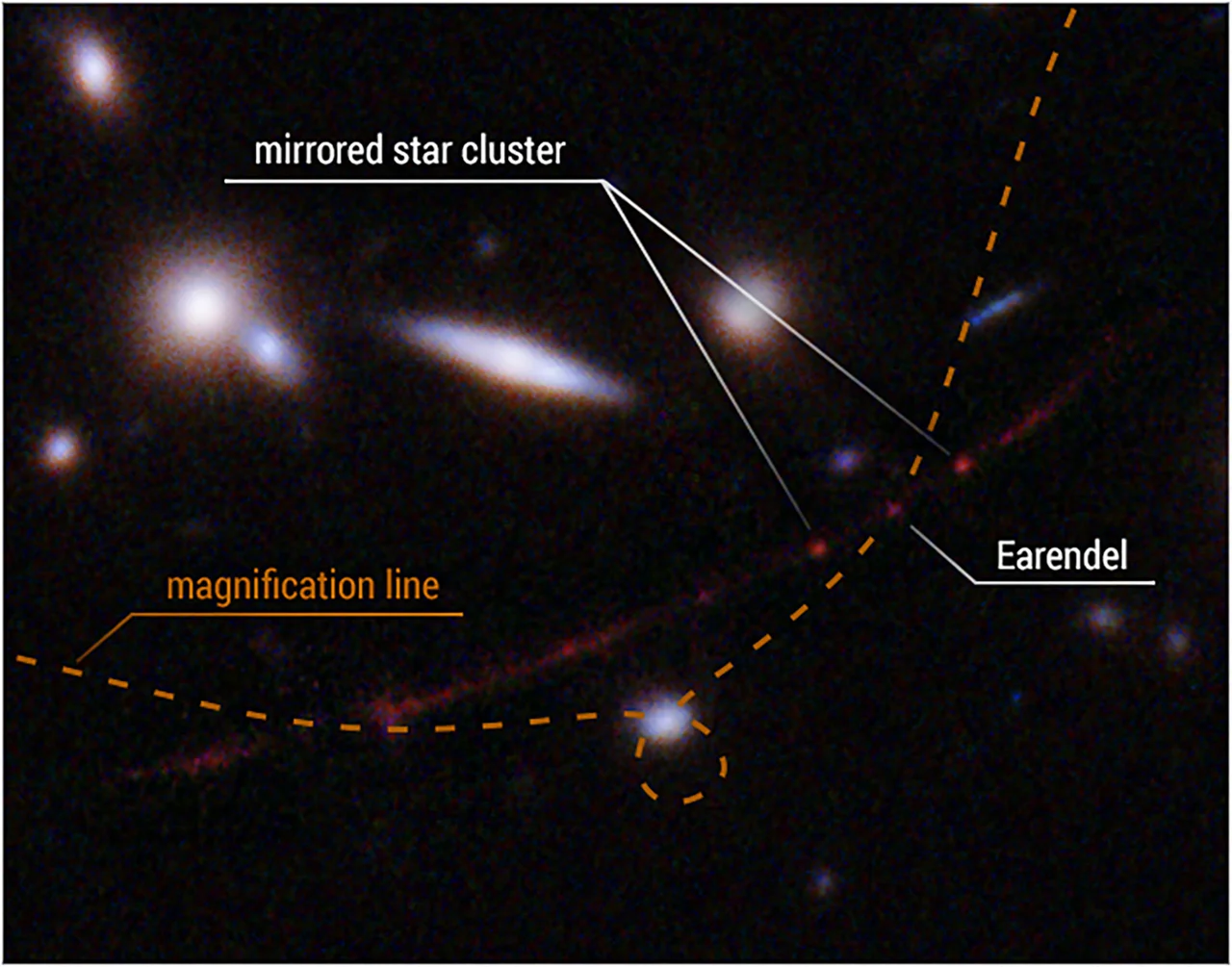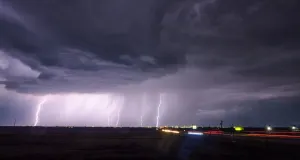
Hubble spots Earendel, setting a new record for farthest star ever seen
An odd cosmic quirk allowed Hubble to far exceed its limits and set a new astronomical record.
After snapping a picture of a distant cluster of galaxies, the Hubble Space Telescope set a new cosmic record, capturing the farthest star ever seen.
During its nearly 32 years in operation, the Hubble Space Telescope has provided us with spectacular views of our universe. It has also pushed the boundaries of our knowledge of the cosmos. In recent years, though, Hubble has reached its limits. It can only see so far out into space, and thus it can only look so far back in time.
When the James Webb Space Telescope is fully operational a few months from now, it is expected to easily exceed these limits. In the meantime, though, astronomers have been using the universe itself to provide little boosts to Hubble's power. The 'trick' is to look in just the right places to take advantage of the ability of gravity to distort the fabric of spacetime into what is known as a gravitational lens.
Hubble has already used this effect to briefly push past its own limitations. It just requires the right target and, in some cases, extraordinary luck.
For a new image snapped by Hubble, astronomers had both. They had aimed the telescope at the right target — a massive cluster of galaxies named WHL0137-08 — and by a feat of extraordinary luck, they also spotted a thin red arc around one edge of the cluster. This arc was the light from an extremely distant galaxy located on the far side of WHL0137-08 that was being bent and distorted by the cluster's gravitational lens.

Galaxy cluster WHL0137-08 stands at the centre of this image taken by the Hubble Space Telescope. The inset frame highlights the cluster's edge, where the red-shifted light from a galaxy on the far distant side is warped into a thin arc by a gravitational lens. The arrow points to a single star strung out along that arc. Credits: Science: NASA, ESA, Brian Welch (JHU), Dan Coe (STScI); Image processing: NASA, ESA, Alyssa Pagan (STScI)
Visible along the arc of that extremely red-shifted galaxy was a star whose light has been magnified around 1,000 times.
This star is estimated to be around 12.9 billion light years away. That makes it the farthest star ever seen. Hubble has looked farther out (and farther back in time) before, to around 13.4 billion years. However, it had imaged an entire galaxy rather than a single star.
"We almost didn't believe it at first, it was so much farther than the previous most-distant, highest redshift star," astronomer Brian Welch of the Johns Hopkins University said in a NASA press release.
"Normally at these distances, entire galaxies look like small smudges, with the light from millions of stars blending together," Welch explained. "The galaxy hosting this star has been magnified and distorted by gravitational lensing into a long crescent that we named the Sunrise Arc."
Based on the name they gave the galaxy, Welch and his team nicknamed the star Earendel, which means "morning star" in old English.

The new farthest star ever seen, Earendel, is shown in this zoomed-in view of the Sunrise Arc galaxy. The image has been labelled to show the ribbon of spacetime distortion (known as a 'caustic') that allowed astronomers to spot the star. The two bright spots on either side of Earendel are actually the light from one star cluster in Sunrise Arc, split by the caustic into two mirrored 'twins.' Credits: Science: NASA, ESA, Brian Welch (JHU), Dan Coe (STScI); Image processing: NASA, ESA, Alyssa Pagan (STScI)
[Bonus 'nerd' detail: Lord of the Rings fans may recognize the name Eärendil, whose twin sons were Elros, the first King of Númenor, and Elrond, the Lord of Rivendell.]
According to the research paper published by the team, Earendel is massive — at least 50 times the mass of our Sun. It may even be a binary pair of stars.
The team observed WHL0137-08, Sunrise Arc, and Earendel for around three and a half years before presenting their findings. The hope is that this ancient star will continue to be magnified by this gravitational 'caustic' until the James Webb Space Telescope can get a better look at it.
Watch below: See 20 years of incredible Hubble imagery in 3 minutes
"With Webb we expect to confirm Earendel is indeed a star, as well as measure its brightness and temperature," said co-author Dan Coe, an astronomer at the Space Telescope Science Institute. "We also expect to find the Sunrise Arc galaxy is lacking in heavy elements that form in subsequent generations of stars. This would suggest Earendel is a rare, massive metal-poor star."
For astronomers, 'metals' are any element within a star that is not hydrogen or helium. It is expected that the first stars to form in the universe will be almost entirely hydrogen and helium. This is because these stars would have needed to die to produce and spread heavier elements throughout the cosmos.
"Earendel existed so long ago that it may not have had all the same raw materials as the stars around us today," Welch told NASA. "Studying Earendel will be a window into an era of the universe that we are unfamiliar with, but that led to everything we do know. It's like we've been reading a really interesting book, but we started with the second chapter, and now we will have a chance to see how it all got started."










